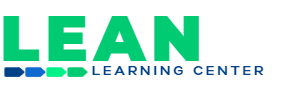Internal advisors, or fellow employees and staff members who are only a few paces ahead of the learner, may be the solution to effective learning for any type of organization.
If your business or enterprise depends on scheduled seminars and trainings for instilling operational excellence, usually you will feature an expert to lead the sessions. Randy Emelo, chief strategist at River, a mentoring and social learning software company, writes that the Buffalo Grove, Illinois branch of US LBM These training events were so successful, reports Amy Brown, director of learning and development for US LBM, that participants asked for ways to stay connected with each other afterward. Brown notes that “every time people go through classes, they still need to reach out afterward to people who speak the same language. Learning leaders at US LBM realized there was an opportunity for them to continue employees’ development through the use of mentoring and social learning software to support peer learning groups.”[4] This resulted in internal advisors becoming experts through a layered process of event attendees sharing the new information with their peers. This type of social networking empowered the employees as well as their internal advisors. Extreme experts in the field were relegated to the position of consultants. Brown points out that “too much cognitive distance between learners and advisors creates an environment where the extreme expert focuses on ‘telling’ the learners what they need to know, rather than creating one that an environment that is open to exploring the topic and [considering] other possible solutions or ideas. Emelo adds that “learning leaders need to form learning groups and help facilitate connections between learners and their near-peer advisors.”[5] A company should also encourage connections with employees outside one’s division in order to establish a broader network of internal advisors. Effective learning can also be enhanced by providing tools to support employees in their effort to build their learning networks. This is an area where lean learning shines. At all levels of learning, the lean toolbox is equipped with expert mechanisms for integrating strategies, performance and recorded results. [1] A group of North American building distributors [2](Six Sigma DMAIC) – A structured problem solving methodology that achieves business success by attacking critical problems through rigorous and fact-based methodologies built upon a culture of lean principles. Six Sigma is derived from statistical terminology and translates to a quality standard of just 3.4 defects per million opportunities. DMAIC is an acronym that stands for define, measure, analyze, improve, control. [3]Randy Emelo, October 16, 2016 CLOmedia.com newsletter. [4] Ibid. [5] Ibid.




